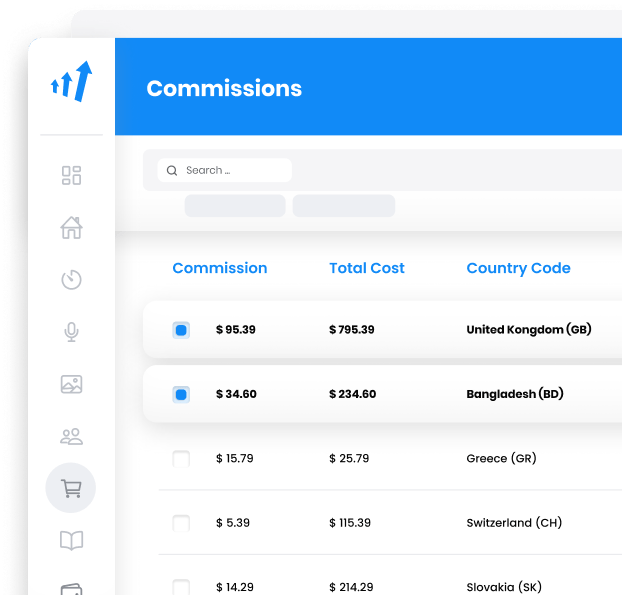What is disclosure?
Disclosure in the context of affiliate marketing refers to the practice of informing consumers about the nature of relationships between affiliate marketers and the companies whose products or services they promote. This typically involves the use of affiliate links, where the marketer earns a commission for sales generated through their promotional efforts. Proper disclosure is mandated by regulatory bodies such as the Federal Trade Commission (FTC) to ensure transparency and protect consumer interests.
Importance of Disclosure
- Legal Compliance: The FTC requires affiliate disclosures to prevent deceptive practices. Failure to disclose can result in legal penalties for both the affiliate and the brand. In the U.S., if you use affiliate links on your website, you are required by the FTC to disclose this. The FTC’s guidelines ensure that consumers are aware of any potential biases in endorsements due to compensation.
- Consumer Trust: Transparency about affiliate relationships helps build trust with consumers, who can then make informed purchasing decisions. Disclosures ensure that consumers are not misled about the nature of the relationship between the marketer and the product or service being promoted. This transparency is crucial for maintaining credibility and trust with your audience.
- Ethical Marketing: Disclosures ensure that marketing practices are ethical and that consumers are aware of potential biases in endorsements. Ethical marketing practices not only comply with legal standards but also enhance the reputation of the affiliate marketer and the brand. By being transparent about compensation, marketers demonstrate their commitment to honest and fair marketing practices.

Components of an Effective Affiliate Disclosure
- Clarity: The disclosure must be clear and understandable to the average consumer. Avoid jargon or technical terms that might confuse the reader. Use plain language and ensure that the disclosure is concise and to the point. It is important to explain any terms like “affiliate marketing” or “affiliate links” that might not be familiar to all readers.
- Visibility: The disclosure should be conspicuously placed, ideally near the affiliate link or at the top of the content, so it is easily noticeable to the consumer. The FTC requires that disclosures be clear and conspicuous, meaning they should be placed where consumers are likely to see them and not buried in terms and conditions.
- Simplicity: Use straightforward language. For example, “I earn commissions for purchases made through links in this post.” This type of language is direct and easily understood by consumers, ensuring that they are aware of the financial relationship between the affiliate and the product or service being recommended.
- Relevance: Disclosures must be relevant to the medium. For instance, in a video, the disclosure should be verbal and appear at the beginning. On social media platforms, hashtags like #ad or #sponsored are commonly used to denote affiliate links. It is important to tailor the disclosure to the platform being used to ensure that it is effective in informing the audience.
Guidelines and Best Practices
- FTC Compliance: The FTC’s guidelines require that disclosures are clear, conspicuous, and placed close to any affiliate endorsements or links. Affiliates must ensure compliance to avoid legal repercussions. It is important to stay updated with any changes in these guidelines to maintain compliance.
- Platform-Specific Requirements: Different platforms may have specific guidelines. For example, on social media, hashtags like #ad or #sponsored are commonly used to denote affiliate links. Each platform may have its own rules and best practices for disclosures, so it is important to be aware of these when creating content.
- Regular Updates: Keep disclosures updated to reflect the current nature of affiliate relationships and any changes in regulatory requirements. As affiliate relationships or compensation structures change, it is important to update disclosures to ensure they remain accurate and compliant with current regulations.
Examples of Affiliate Disclosures
- Blog Post: “This post may contain affiliate links, meaning I get a commission if you decide to purchase through my links, at no cost to you.” This type of disclosure is effective in written content where affiliate links are included.
- YouTube Video: “Before we start, I want to let you know that the products I’m about to review are affiliate links, and I may earn a commission if you buy through them.” In video content, it is important to include a verbal disclosure at the start to ensure viewers are aware of the affiliate nature of the content.
- Social Media: “Check out this amazing product! #ad #affiliate” On platforms like Instagram or Twitter, using hashtags is a quick and effective way to disclose affiliate relationships.
Tools and Resources
- Disclosure Generators: Tools like Termly and TermsFeed offer templates and generators to help create compliant disclosures. These tools can assist in creating disclosures that meet legal requirements and are tailored to specific needs.
- Plugins: WordPress plugins such as WP Affiliate Disclosure can automate the addition of disclosures to your content. These plugins provide an easy way to ensure that disclosures are consistently applied across all content.
Common Misconceptions
Sufficient to Mention Once: Disclosures should be repeated as necessary, especially in long content, to ensure continuous transparency. In lengthy content, it may be necessary to remind consumers of the affiliate relationship to maintain transparency throughout the piece.
Disclosure Equals Disclaimer: Disclosures are not the same as disclaimers. Disclosures specifically inform about compensation, whereas disclaimers limit liability. It is important to understand the difference and use each appropriately to meet legal requirements and maintain transparency.
One-Time Requirement: Disclosures must be present on every piece of content containing affiliate links, not just once on a website. Each piece of content that includes affiliate links should have its own disclosure to ensure compliance and transparency.
Frequently Asked Questions
What should I write in an affiliate disclosure?
An affiliate disclosure is a statement that lets your readers know that you have a financial relationship with a company, and that you may receive compensation if they purchase something from that company.
Where should I put the affiliate disclosure?
The affiliate disclosure should be placed on the same page as the affiliate link.
How do I add an affiliate disclosure?
You can add it after your affiliate links.
Discover the role of an affiliate in marketing—earn commissions by promoting products through banners, links, and campaigns. Learn how affiliates drive sales and explore effective marketing strategies. Join the world of affiliate marketing with Post Affiliate Pro for user-friendly tools and exceptional support.
Discover the essentials of APIs with our comprehensive guide. Learn how Application Programming Interfaces facilitate seamless communication between applications, simplifying processes and enhancing functionality. Watch our quick video to understand how APIs work with real-world examples. Perfect for anyone looking to grasp the basics of API interaction and integration.










